Virtual reality and mindfulness workshop
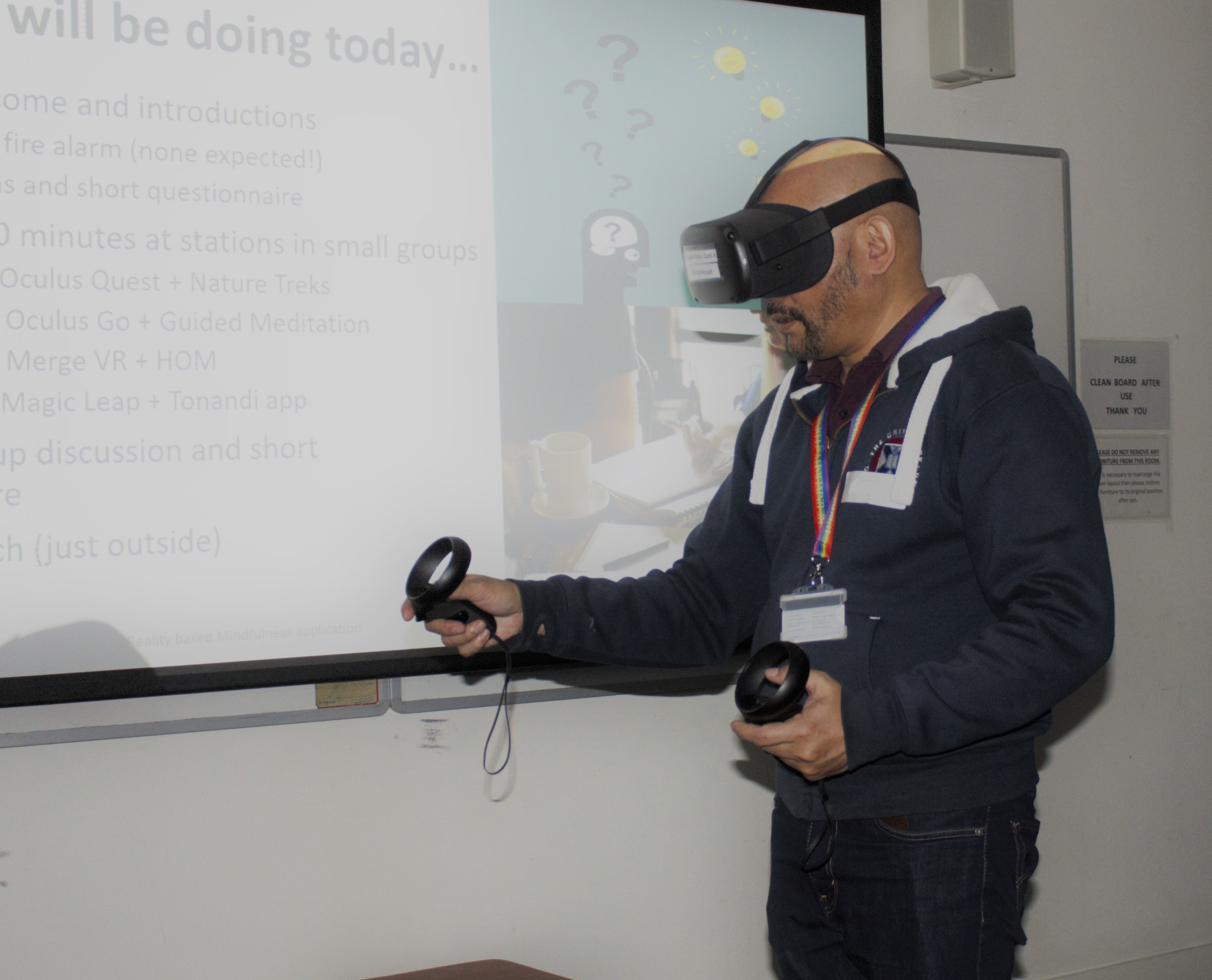
The first VRinMind workshop kicked off today, 18th February, and was a jam-packed day with participants getting opportunities to use a number of virtual reality (VR) technologies and share their creative insights into what might work for mindfulness practice in a VR app. Nine people came from far and wide, with some making their way from Glasgow and even Aberdeen! So grateful to those who travelled long distances – we really appreciate the time and input everyone gave. 😊
The morning kicked off with the usual ethics documentation, over tea and biscuits, and then moved swiftly onto navigating around four virtual reality stations positioned around the room. Each station had a facilitator to help get the VR headsets on and off and deal with any technical issues. Starting with fairly low-tech gadgets, Alison manned the station with the Google Cardboard (https://arvr.google.com/cardboard/) and Merge (https://mergeedu.com/) VR headsets. Using a smartphone preloaded with the Hom by Root app (https://apps.apple.com/us/app/hom-by-root-vr/id1490915911), participants were able to become a butterfly and float through a garden hopping from flower to flower to practice guided imagery and positive affirmations.
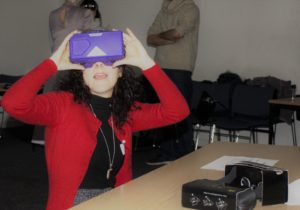
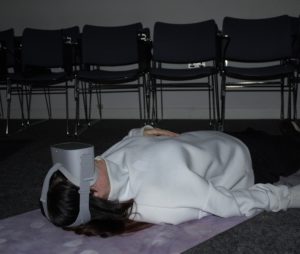
Siobhan oversaw the next station where participants could try out an Oculus Go (https://www.oculus.com/setup/) with a Guided Meditation VR app (https://store.steampowered.com/app/397750/Guided_Meditation_VR/). Some comfy yoga mats were also on hand for those who wanted to lie down to get the full meditative experience, while being immersed in photo-realistic landscapes and soothing music or meditation podcasts.
The next station had an Oculus Quest (https://www.oculus.com/quest/) on loan from the UCreate studio (https://www.ucreatestudio.is.ed.ac.uk) based at the university library. Gregg set up the guardian system enabling people to walk around different virtual environments, before helping participants familiarise themselves with the controllers and get into the Nature Treks VR app (https://naturetreksvr.com/). Some enjoyed the deep-sea swimming experience with dolphins and turtles, while others did not!
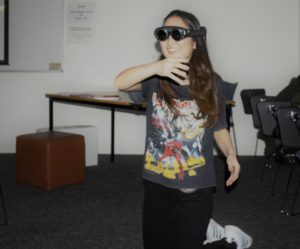
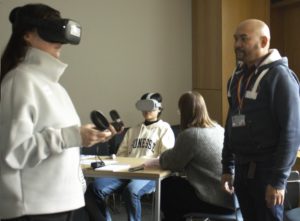
Beverley was on hand at the last station to support participants when using the Magic Leap. This is a novel augmented reality (AR) tool with the Tonandi app loaded to play around in (https://www.magicleap.com/experiences/tonandi/). To the soothing sounds of Sigur Ros, the AR app provides an interactive audio-visual exploration of sounds and movements in a real space – something participants really enjoyed.
A lively discussion of the pros and cons of the VR technologies on offer preceded lunch with some much needed coffee! The afternoon gave participants a more creative space to use a range of resources to design their perfect VR app for mindfulness. From funky and furry textiles, to photo elicitation, and a rather ingenious origami game – the children’s classic fortune teller game – participants used their imagination to mold a wonderful mix of creations representing their perfect virtual reality mindfulness app.
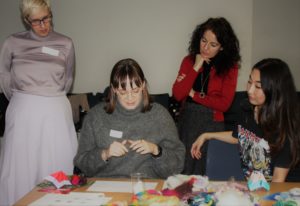

One person envisioned herself as a bear playing in a forest and wrote an accompanying narrative that would unfold in her virtual experience, allowing her to centre herself through a digital avatar. Remaining grounded and transitioning in and out of the virtual space was thought to be important by others, who chose photos reminiscent of going on a journey and seeing into far distant landscapes. Another participant took origami to the next level using the opening and closing of the fortune teller game to mimic a VR breathing app that could help users focus on their meditative practice and bodily awareness, layering design and function aspects of the app within the origami folds.
The workshop wrapped up with each participant sharing their vision for a virtual reality based mindfulness app and what was important for them – some tailored, personalised content with options for colours, sounds, abstract and real environments, human and animal avatars, and much more. Heterogeneity was the flavour of the day, with no one individual wanting the same VR mindfulness experience. With thanks and goodbyes, the research team gathered all the outputs from the workshop, grateful for a productive and fun day that we can build on for future co-design events.

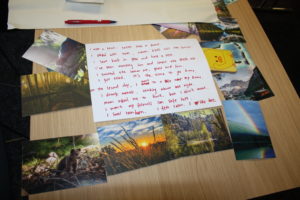



Great and interesting work shop it helps us to visualized many thinks in a very different ways. Virtual Visual Field is providing free threshold testing please checkout